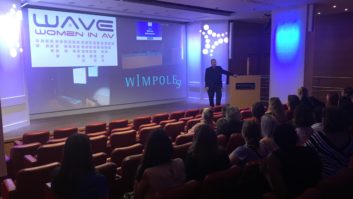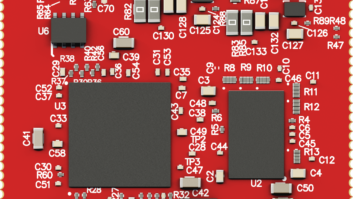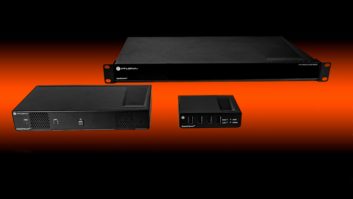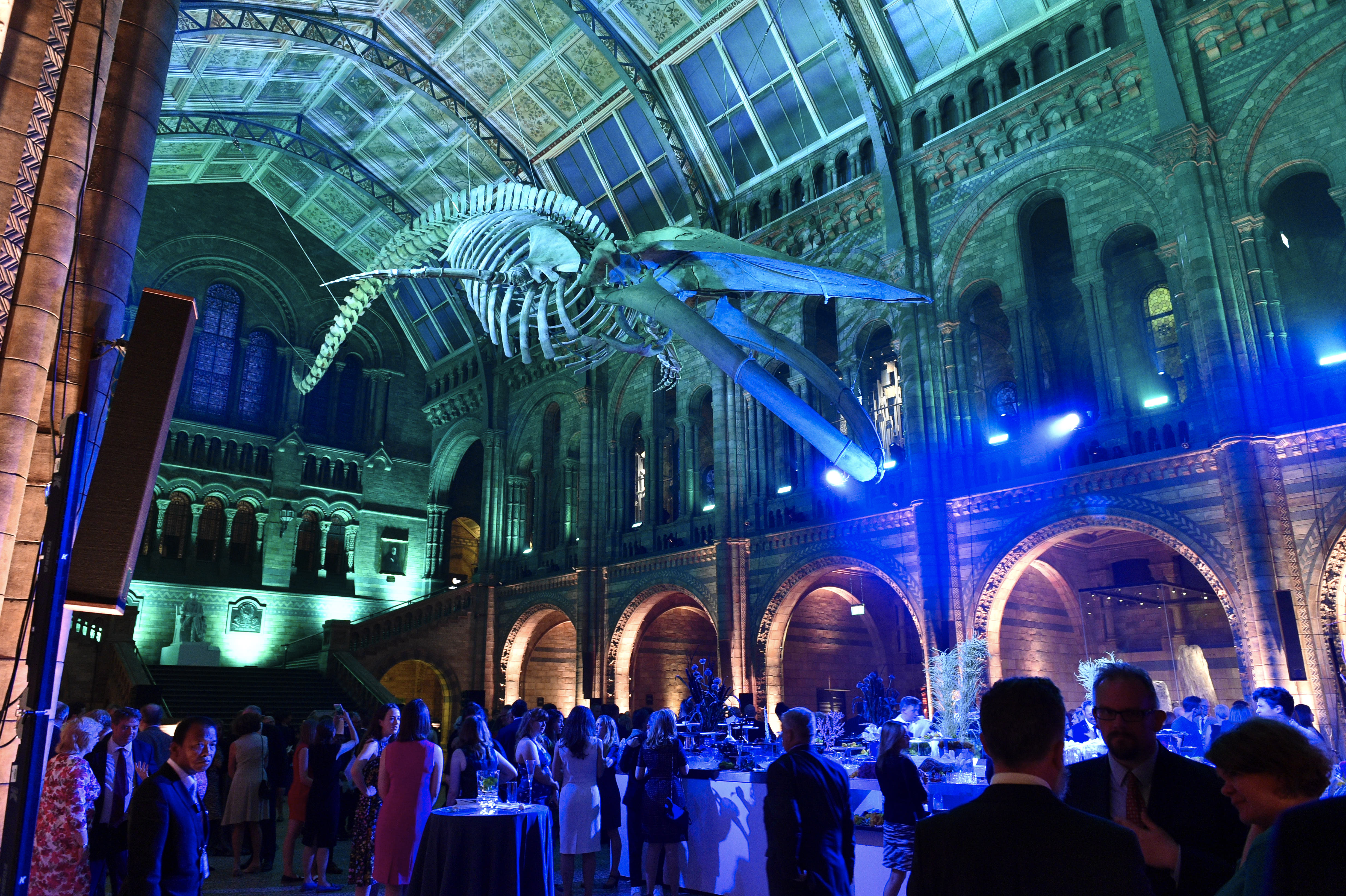
Night at the museum: The Natural History wanted to celebrate its latest inhabitant’s arrival with a VIP “night to remember” event. Here’s how it did it
The Natural History Museum (NHM) in London – dubbed by some as the cathedral of nature – is one of the most iconic venues in London, thanks to its Romanesque architecture, wide spaces and high gallery ceilings.
Today, more than 20,000 people pass through its doors a day, viewing the estimated 80 million artifacts – with the star attraction housed in its most central location, Hintze Hall – which also doubles as a corporate event hire venue by night.
Since the 1970s, Hintze Hall had been home to a Diplodocus skeleton (Dippy, to his friends), but in July – following a six month revamp, the room reopened, not with Dippy, but a 25.2-metre blue whale skeleton (called Hope) suspended from the ceiling.
We worked hard in putting together a lighting package that would bring it to life
To mark the completion of its latest inhabitant, the NHM wanted to celebrate the occasion with a grand “once in a lifetime” event.
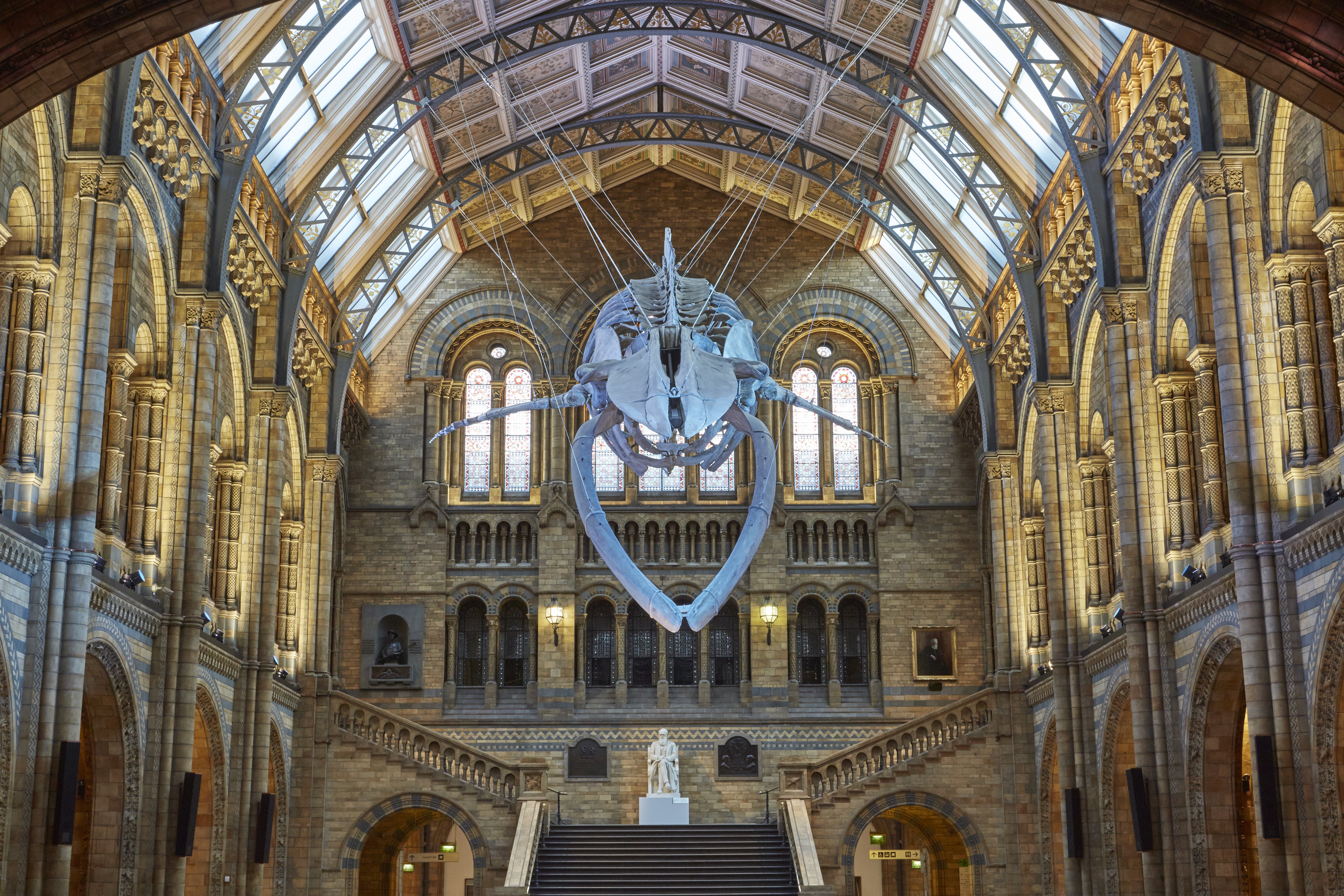
With more than a thousand VIP guests – including Patron HRH The Duchess of Cambridge and Sir David Attenborough – the NHM wanted to create a truly immersive experience for its guests. One which would emotionally remove them from the (tomb like) room and visually submerge them into a more aquatic themed environment more akin to that of its star attraction.
The NHM entrusted AV specialist White Light to achieve its ambitions, which took more than four months of preparation to perfect.
“The Museum approached us to provide the complete technical support across the evening”, explained White Light’s Creative Producer Richard Stirzaker to AVTE. “This included lighting, rigging and audio. There were both audio and visual elements throughout the evening. Speeches happened from one of the three stages alternately throughout the evening being supported by content across the windows of the venue. The initial creative ideas started around four months prior to the event. This was then followed by projection tests in the venue and digitally mapping the whole space.”
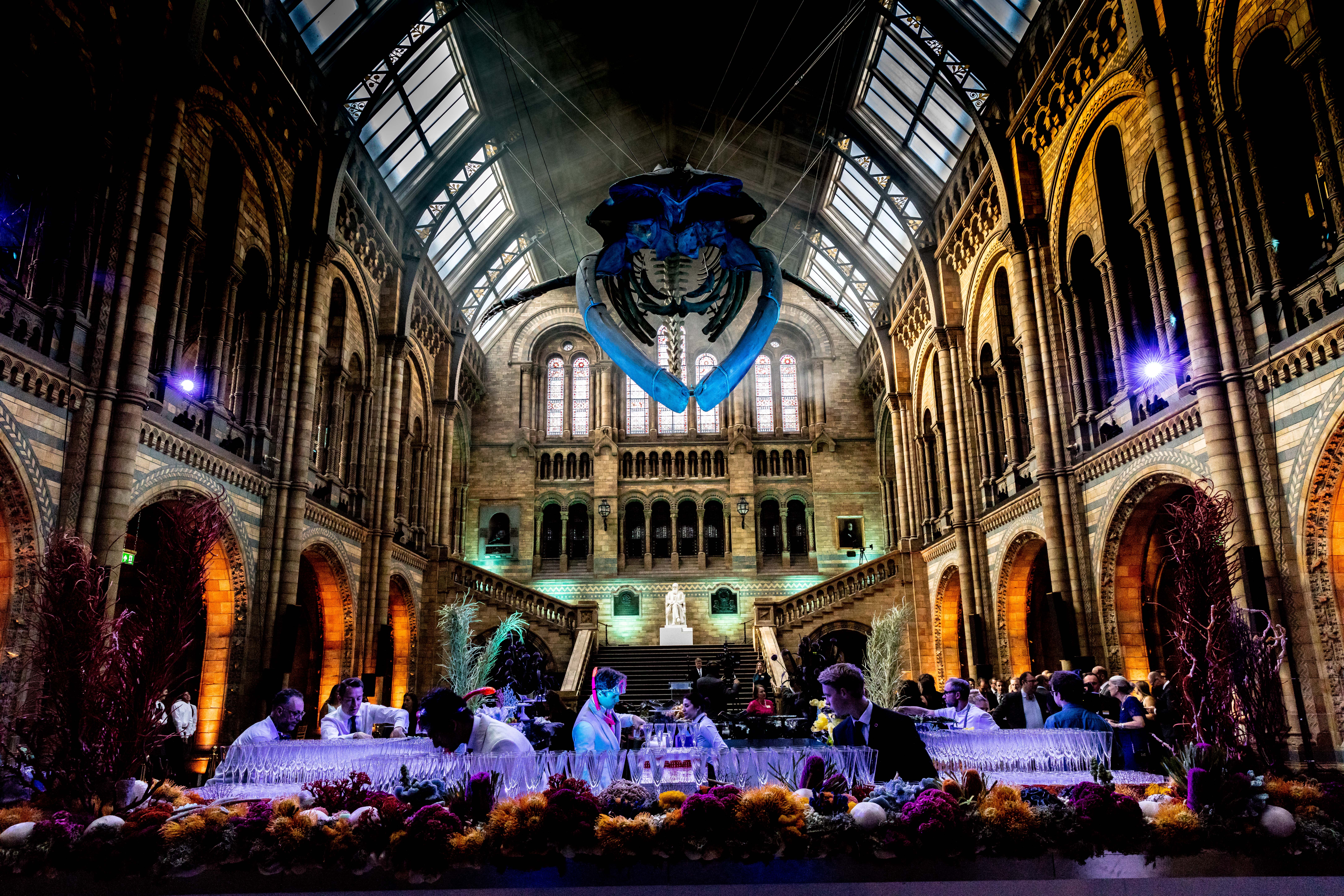
Bringing the dead to life
White Light used an array of audio (including a 14 piece orchestra and whale recordings), lighting, projection and even a fog screen to help transform the mood and feel of the room during the various stages of the evening.
With the theme of the event being ‘Under the Sea’, AV was used predominantly to create an underwater sensational environment – whilst the finale transported the room into space, with Stephen Fry discussing the universe.

The focal point however was of course on the star attraction, Hope – so, standing out was crucial.
“The whale was obviously the main focus, so we worked hard in putting together a lighting package that would bring it to life,” Stirzaker explained. “How we did this changed at different times across the evening. When guests arrived, it was about enhancing the existing light within that space for a dramatic effect. As the evening progressed, the museum hired an orchestral piece, for which we supplied the audio support and played it in different areas to ensure all guests felt part of the evening. Our role was to then theme our lighting with the music to provide a once-in-a-lifetime experience for those in attendance as well as continue to enhance the whale and other exhibits on display.”
Challenges
Planning for the event was not without challenges. With Hintze Hall featuring large windows arching into the ceiling, and the event taking place at 7pm in July, the room would be flooded with natural light at the beginning of the event, slowly fading as the evening went on, changing the conditions.
However, rather than see this as a problem, Wilson explained they used this as an opportunity, by combining natural and artificial lighting to help provide a more visually illuminating effect on the whale’s skeleton.
“The biggest challenge on this event was working with external light,” explained Stirzaker. “Due to the event starting early evening, this meant there was still a lot of daylight visible when guests walked in. Yet rather than try and ignore this, we actually embraced it and chose to work alongside it. Therefore, we’ve allowed the external light to live within the space by seeping through the windows and shining directly onto the whale. Supplemented with our own lighting fixtures, this created quite a dramatic effect”
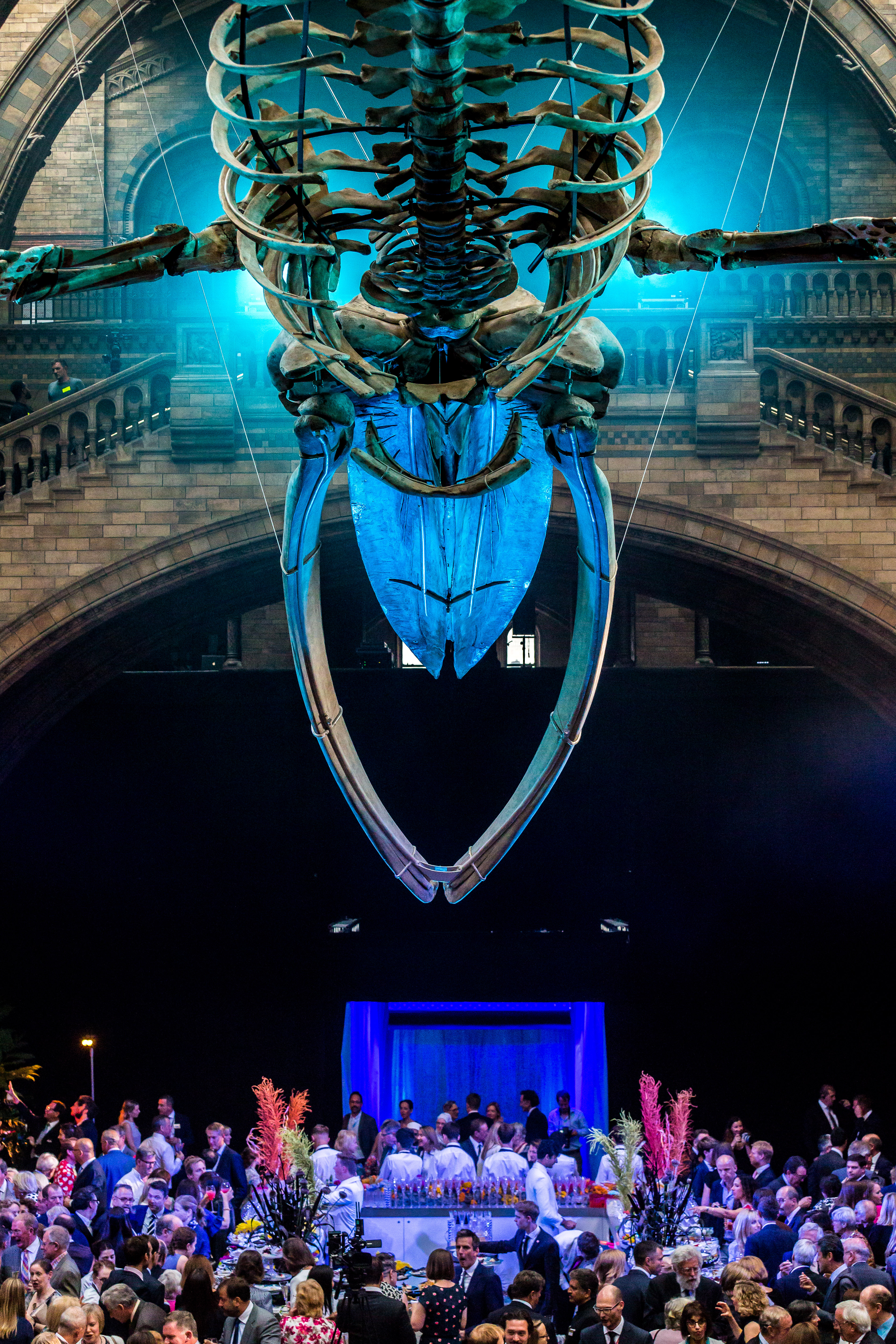
He continued: “At the start of the evening we wanted to heighten the natural sunlight through one side of the hall and really strengthen the feeling of sunlight bursting into the space. This with some haze in the air really created a striking effect.”
Stirzaker also revealed part of his inspiration came from a black and white photo of the Hall taken in more than 100 years ago, in 1910
“It was a great feeling to re-create this feel for the guests in the refurbished hall.”
As for the final result…
He concluded: “This exhibition is unlike anything we’ve seen before. It gives people the opportunity to see a stunning creature up close along with a whole host of other specimens, which include a 4.5 million-year-old meteorite, a Mantellisaurus skeleton, giraffes and a blue marlin. We were delighted to have played a part in the grand opening.”
The tech
Wireless Core ColourPoints
Mac Viper Performances
Mac Aura XBs
SGM LED Floods
SVOBODA Lighting Batten



